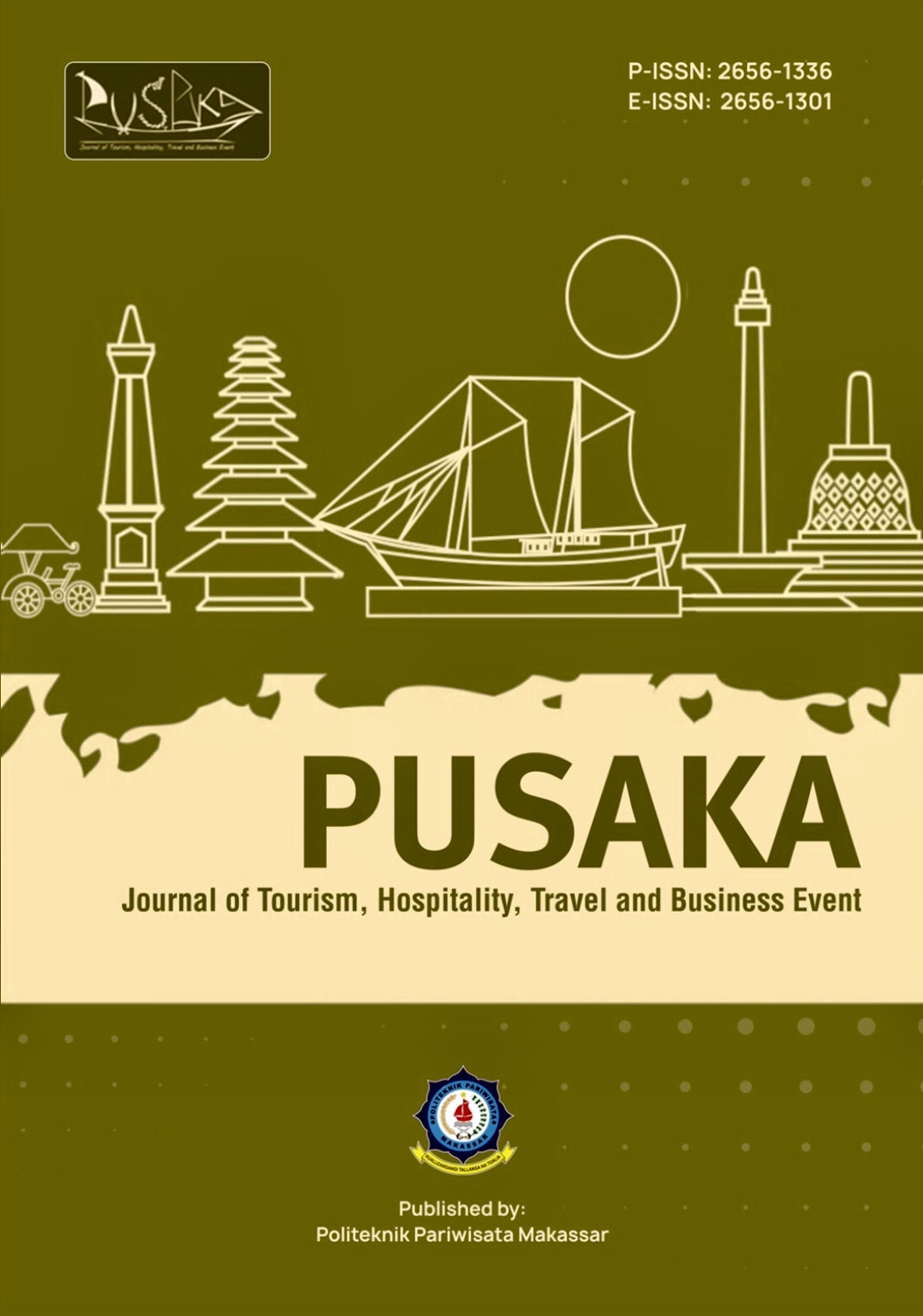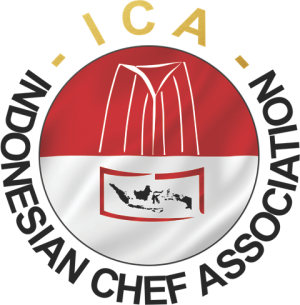Strategies and Models for Development of Hot Water Tourism Objects in Tombasian Village Under Kawangkoan Barat District, Minahasa Regency
DOI:
https://doi.org/10.33649/pusaka.v4i2.170Keywords:
Strategy, Development, Tourism Object, Hot Water, Tombasian Bawah, StyleAbstract
Tourism development is sought to be developed in the context of economic improvement, sustainable development and technological development. Geographically, each region has different characteristics with their own uniqueness and advantages. Natural resources that are owned with all its contents, land in all its forms and the sea with all its contents. This potential can be utilized optimally through tourism. Natural resources owned with all their contents and existing potential will be utilized for development purposes. That potential can be an asset through the tourism sector. One of the attractions that attracts the attention of both domestic and foreign tourists is the hot springs in Tombasian Bawah Village. Tombasian Bawah Village is one of the villages in Kawangkoan Barat District, Minahasa Regency, where in general the people work as farmers and craftsmen on stilt houses. Furthermore, the data that has been collected is analyzed by descriptive analysis using the SWOT analysis method and breaking it down internally and externally. The stages of the research were field observations by collecting data at the physical location, conducting interviews with the government of tourist attraction locations with village programs and district governments related to the development of tourism objects, specifically hot water in the village of Tombasian Bawah and visitors to obtain data. The results of the study show that the Hot Spring Tourism Object Development Strategy is adequate which can be applied by developing tourism on holidays and other holidays. And the model is community based. The development of this hot spring tourism object can be done by diversifying tourism objects and modifying the system so that tourists can travel easily and pleasantly. The results of this research are the proceding/Sentrinov output targets and reports.
References
Arikunto, S. 2010. Research Procedures A Practical
Approach. Jakarta: PT Rineka Cipta
Atiko, Gita; Sudrajat, Ratih Hasanah; Nationality,
Charisma. 2016. Analysis of Tourism Promotion
Strategy Through Social Media by the Ministry of
Tourism. Bandung: Sociotechnology Journal Vol.
, No 3:378-389, December 2016.
Azwar, Saifuddin (2000). Reliability and Validity.
Yogyakarta: Learning Library
Bungin, Burhan. (2015). Tourism Communications
(Marketing And Destination Brands). 1st printing.
Jakarta: Prenadamedia Group.
Bryson 2002, SWOT Analysis of Differentiating
Business Case Techniques. Jakarta. PT. Gramedia
Main Library, Gramedia Compass.
Darsana, I Wayan. 2011. Strategy for Development of
Tourist Attractions in the Western Region of Nusa
Peninda Island, Klungkung District.
Edmiston, D. (2009), “An Examination of Integrated
Marketing Communications in US Public
Institutions of Higher Educations,” International Journal
of Educational Advancement, Vol 8, 3/4, pp 152–
Jones, Brian. (2010), “Entrepreneurial Marketing and the
Web 2.0 Interface, Journal of Research in
Marketing and Entrepreneurship”, Vol. 12, No. 2,
pp 143-152
Jennifer H. Waldeck; Patricia Kearney; Timothy G. Plax
(1 January 2012). Business and Professional
Communication in a Digital Age. Cengage
Learning. p. 148. ISBN 978-0495 80798-8.
Jalilvand, Muhammad Reza and Neda Samiei. (2012),
“The Impact of Electronic Word of Mouth on A
Tourism Destination Choice: Testing The Theory of
Planned Behavior”,
Journal of Internet Research (2012) Vol. 22 No. 5, pp.
-612.
Kotler, Philip and Keller. (2012), Marketing
Management, Prentice Hall, 14th Edition, p. 498.
Kotler, Philip, and Kevin Lane Keller. 2009. Marketing
Management Volume 1, Thirteenth Edition,
Translation of Bob Sabran, MM. Jakarta: Erlangga
Publisher
Kotler, Philip and Gary Armstrong. 2012. Principles of
marketing. Edition 13 Volume 1. Jakarta: Erlangga.
Litvin, Stephen, Ronald Goldsmith, and Bing Pan.
(2007), “Electronic Word of Mouth in Hospitality
and Tourism Management” Journal of Tourism
Management, 29 (2008), pp. 458-468.
Kominfo.go.id. (2018) “Kominfo: Internet Users in
Indonesia 63 Million People”. URL:
https://www.kominfo.go.id/content/detail/3415/ko
minfo-user-internet-di-indonesia-63-jutaorang/0/berita_satker (Accessed January 29, 2019)
Hair, J. F.; Black, W. C.; Babin. B. J. and Anderson, R.
E. (2014), Multivariate Data Analysis, 7th ed.
Endinburgh Gate, Harlow: Pierson Education
Limited
McQuail, Denis. 2011. Communication Theory. Jakarta:
Salemba Humanika
Now, Uma. 2000. Research Methodology. Salemba
Empat Publisher, Yogyakarta.
Moleong, J. Lexi. 2002. Qualitative Research
Methodology. Bandung: Youth Work
Munadi, Yudhi. 2008. Learning Media: A New
Approach. Jakarta: Echoes of Persada Press.
Nasrallah, Rully. 2015. Social Media. Bandung:
Symbiosis Rekatama Media.
Mellyaningsih, Adinda. 2016. Subscriber Motives
Watching Raditya Dika's Youtube Channel. Journal
of e-communication vol. 4 no.1 :1 -12
Nurfatiyah, Pera; Mara, Armin; Siata, Ratnawaty;
Farida, Aulia, Aprolita. 2011. Utilization of Video
as a Media for Disseminating Agricultural
Innovations. Journal of community service no
:30-36 ISSN: 1410-0770.
Downloads
Published
How to Cite
Issue
Section
License

This work is licensed under a Creative Commons Attribution-ShareAlike 4.0 International License.






















